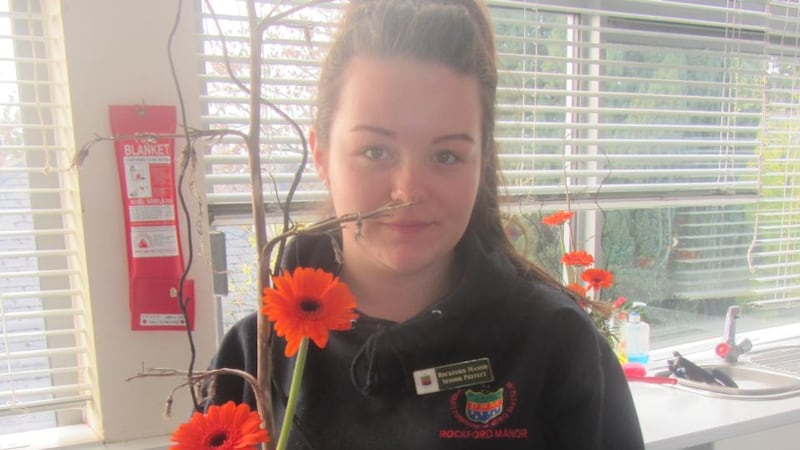Studying pop songs instead of Shakespeare, fun class trips and figuring out your future career while on the job is not something people usually associate with the Leaving Cert. But for many students it’s a better way to get through two of toughest years in school.
“I didn’t think I’d finish school. I was really struggling and I didn’t want to go in. The school suggested the Leaving Cert Applied to me. They said it might be more suitable because I’d learn in a more hands-on style with smaller classes and work experience,” says Carissa Smith. “That appealed to me a lot more than just sitting down in front of a book. It sounds a bit mad but I loved going to school after that. I was happy to get up in the morning.”
Smith, who completed her Leaving Cert Applied in 2013, is one of about 3,000 students who do that alternative programme to the mainstream Leaving Cert each year.

The Leaving Cert Applied is distinct from the Leaving Cert Vocational Programme, where students take five Leaving Cert subjects along with three compulsory modules on enterprise education, preparation for work and work experience.
Group work, continuous assessments and work experience are hallmarks of the Applied programme.
“Students who like being very practical are most suited to the Leaving Cert Applied,” says Maureen Casey, who co-ordinates the programme at Caritas College, Ballyfermot. “If you’ve a student who is good at learning and good at remembering, they’re not going to take up the Leaving Cert Applied. But for the student who is good at learning by doing, who might not be as academically inclined as others, the Leaving Cert Applied is a very positive way to keep them engaged with education.”
Different approach
Students take 10 subjects, including core subjects such as English, maths, Irish and a foreign language, but the approach is different to the traditional Leaving Cert.
“It’s taken at a slower pace,” says Smith. “So instead of teaching you algebra and then expecting you to go off and do the maths equation yourself, you do it and you bring it in and you discuss as a class how you got to that answer. You really understand it.
"What we'd learn in English would be similar to what the other class was learning too. But we choose to learn about similes by studying a song instead of a poem. We picked Jar of Hearts because it was current and something we could relate to."
Along with 10 set subjects, students specialise in two out of 12 specialisms (not all schools offer all 12). These include hotel catering and tourism, hair and beauty, agriculture, and craft and design.
All subjects are graded by continuous assessment – which includes orals, written and practical assignments – over two years. Students have interviews with external examiners to prove their knowledge of completed tasks. There are six exams at Leaving Cert time in June, but but they only represent a part of the overall grade.
“Students work towards their Leaving Cert grade from the moment they enter the programme,” says Emma Keane, Leaving Cert Applied co-ordinator in Oaklands Community College, Edenderry, Co Offaly. “It’s divided into four sessions, two per year. At the end of each session, they get credits for their subjects. That’s a great motivation: they have an idea where they are going throughout the two years, as opposed to just one end result.”
Further study
Work experience is key; there are four weeks of it across the two years, done in blocks or one day per week. Smith says her work experience in animation and photography helped her realise that, although she enjoyed them, she didn’t want a career in the area. Her final work experience confirmed she wanted to work with children with special needs. She was offered a place on a youth work programme in Northern Ireland after school and now runs a youth club for children with special needs in Dublin. She has also taken up an IT course in Liberties College to learn about integrating technology for special-needs children.
The immediate further-study options for Applied students are limited to a post-Leaving Cert course or an apprenticeship. But the hands-on and vocational nature of many students means most can easily progress on to their career path.
Liam Doran, a sixth-year student at Oaklands Community College, is confident about his next step after school. “During my work experience I worked in the school doing caretaking, then I worked in a gym and now I’m working in the local pub. The pub is something I’d like to get into. I’ve been helping out preparing the lunches, and I want to go to Athlone to become a chef. If I had done the traditional Leaving Cert, I wouldn’t have known what I’d do after school.”
Many Applied students do apprenticeships. Sixth-year student Normajean O’Brien at Rockford Manor in Blackrock, Dublin, has been offered an apprenticeship in a local hairdresser and is trying to decide between it and a course in special needs. “I love both but I have another work experience in March, so I’ll see about doing another special-needs assistant experience. Then I’ll have to tie it down and decide.”
The practical nature of the Leaving Cert Applied has given her lots of life skills. “I’m learning skills I can use when I leave school, like using bank accounts, budgeting, how to pay the bills, how to book a holiday and how to rent a house,” she says.
LEAVING CERT APPLIED: HOW IT WORKS
The Leaving Cert Applied is made up of 200 credits:
62 credits (31 per cent): ongoing attendance, class work and assignments
70 credits (35 per cent): seven tasks (project work)
68 credits (34%) : final examinations
Three award categories:
Distinction: 170-200 credits (85 per cent-100 per cent)
Merit: 140-169 credits (70 per cent-84 per cent)
Pass: 120-139 credits (60 per cent-69 per cent)
All Leaving Cert Applied students do these subjects: vocational preparation and guidance, English and communication, mathematical applications, information and communication technology, arts education, social education, Gaeilge chumarsáideach, modern language, leisure and recreation, elective module (for example science, religion or drama).
Students then complete two specialist vocational courses to develop specific skills and knowledge: active leisure studies, agriculture/horticulture , childcare/community care, craft and design , engineering, graphics and construction studies, hair and beauty, hotel catering and tourism , information and communication technology, office administration and customer care, and technology. (Source: PDST/LCA)

















